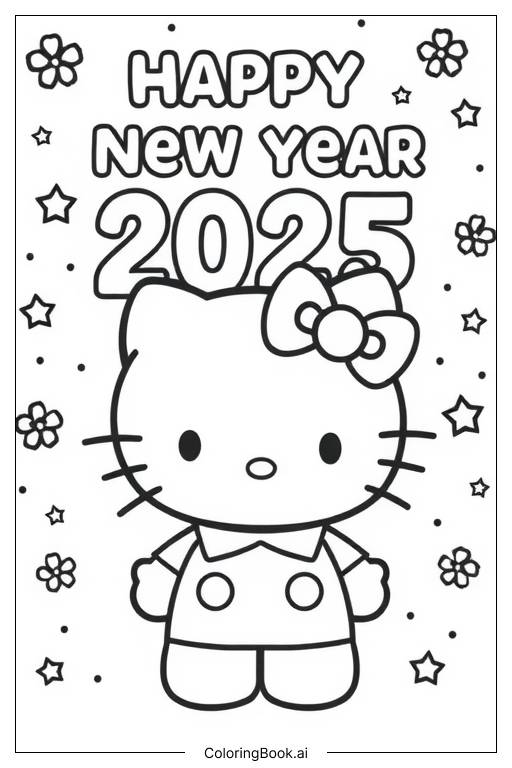Is Hello Kitty really not a cat? Despite her ubiquitous presence on merchandise globally, the assertion that Hello Kitty is not a feline is a claim that continues to spark debate, but this statement is completely valid!
The character, a creation of the Japanese company Sanrio, has become a global phenomenon. The genesis of this icon, which has transcended cultural boundaries, began in 1974. The original design was the work of Yuko Shimizu, later transitioning to Yuko Yamaguchi, who has been the primary designer since 1980. This evolution is a testament to the character's enduring appeal. The initial concept was rooted in the popularity of cute animal characters, especially those featured on greeting cards. The decision was made to develop a character that could resonate with a broad audience, leading to the creation of Hello Kitty.
Hello Kitty's journey from a simple design to a global brand is a fascinating case study in marketing and cultural impact. Sanrio's strategy of expanding Hello Kitty's presence beyond Asia proved highly successful, transforming her into a pop culture icon. The character's versatility is evident in the range of products she adorns, from stationery and apparel to theme parks and even themed restaurants and cafes. This adaptability has allowed Hello Kitty to remain relevant across generations and diverse demographics.
The following table provides a concise overview of the key information regarding Hello Kitty and the individuals involved in her creation and evolution:
| Category | Details |
|---|---|
| Character Name | Hello Kitty (Kitty White) |
| Creator | Yuko Shimizu (original), Yuko Yamaguchi (current designer) |
| Company | Sanrio |
| Birthdate | 1974 |
| Current Designer | Yuko Yamaguchi (since 1980) |
| Notability | Global pop icon, UNICEF ambassador, subject of themed restaurants and parks |
| Founder of Sanrio | Shintaro Tsuji |
| Hypland x Hello Kitty carnival | Created by Jordan Bentley |
| Reference Website | Sanrio Official Website |
The character's design, originally intended to appeal to a broad audience, has indeed achieved remarkable success. Hello Kitty has become much more than just a character; she embodies a lifestyle, a symbol of cuteness, and a testament to the power of branding. Her seemingly simple design has proven to be incredibly adaptable, allowing her to evolve with the times and maintain relevance across cultures and demographics.
The decision to create an original character based on popular animals, which were often seen on greeting cards, proved to be a shrewd move. This strategy allowed Sanrio to tap into a pre-existing market and capitalize on the widespread appeal of cute, friendly imagery. The initial success of the character paved the way for further expansions, with Sanrio revitalizing the brand in 1979, bringing in illustrators like Yuko Yamaguchi to develop new imagery and keep the character fresh and engaging.
Hello Kitty's commercial success expanded beyond Asia, and with it, her persona began to develop further. This global expansion has led to a multitude of themed products, partnerships, and appearances in various media, further solidifying her status as a global icon. Her reach extends to the realm of social causes, with Hello Kitty serving as a UNICEF ambassador, highlighting her role as a positive influence.
The character's influence isn't limited to merchandise; Hello Kitty has also inspired themed restaurants, cafes, amusement parks, and even a maternity hospital. This demonstrates the depth of her cultural impact and the affection she has garnered worldwide. Through strategic branding and consistent creative development, Hello Kitty has become much more than a simple design; she's a cultural phenomenon.
The role of Yuko Yamaguchi in maintaining Hello Kitty's modern appeal is also pivotal. Since 1980, Yamaguchi has been tasked with keeping the character both modern and timeless. Whether through new outfits or adaptations to evolving trends, Yamaguchi's contribution has been vital in ensuring that Hello Kitty remains relevant to new audiences while retaining her core appeal.
The story of Hello Kitty underscores the importance of strategic brand building, consistency, and adaptability. Sanrio's success with Hello Kitty also highlights the power of cultural exchange. By creating a character that transcends borders and resonates with diverse audiences, Sanrio has not only built a successful business but has also contributed to the global conversation about cuteness and pop culture.
In 2021, Jordan Bentley, in collaboration with Sanrio, created a Hypland x Hello Kitty carnival, exemplifying how the character continues to inspire creative ventures. This event highlights Hello Kitty's enduring appeal, showcasing how she remains an active force in popular culture. The carnival experience reflects the brand's ability to engage with modern audiences in innovative ways, ensuring its continued relevance.
The journey of Hello Kitty is a testament to the power of design, branding, and cultural sensitivity. What started as a simple concept has become a global phenomenon, demonstrating how creativity and strategic vision can transform a single character into a cultural icon. Her enduring popularity reinforces the importance of keeping a brand fresh and relevant while staying true to its core values. As Hello Kitty approaches her 50th anniversary, her story is a rich example of the sustained relevance of a pop culture icon.
Shintaro Tsuji, the founder of Sanrio, originally started by selling sandals decorated with flower paintings. This early venture demonstrates his entrepreneurial spirit and his understanding of the value of appealing to the market. The decision to develop an original character came later, reflecting his insight into trends and customer preferences, which laid the foundation for Hello Kitty's creation and subsequent global success.
The evolution of Hello Kitty, and her enduring presence in the global market, offers valuable lessons for creators, marketers, and anyone seeking to build a lasting brand. Her story continues to unfold, and the conversation around her origins and ongoing evolution will continue to be a subject of discussion for years to come, cementing her place as a true icon.

